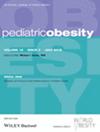Improved food habits and anthropometry among primary school children following a novel healthy eating programme
Abstract
Objective
Assess longer-term changes in food habits and anthropometry among Grades 1–2 primary school students from four public schools in Colombo, Sri Lanka, following a 3-week programme including a classroom-based motivational storybook discussion and self-monitoring food diary (FD).
Methods
This follow-up study assessed changes from baseline (pre-intervention) BMI z-scores and food habits (increased healthy food-item consumption/decreased unhealthy food-item consumption reflected by an increase in FD score) and parental perceptions (anonymous questionnaires) among 863 students (aged 6–8 years), between 9 and 12 months after completing the programme (November 2019–February 2020).
Results
Food habits showed sustained improvement from baseline mean FD score (baseline vs. follow-up: 51 ± 23% vs. 67 ± 22%, p < 0.001), with children from all BMI subgroups (underweight [UW], normal weight [NW], overweight [OW] and obesity [OB]) showing a significant increase in FD scores (ranging from 14.1% to 17.2%, p < 0.001). BMI z-scores increased in children living with UW (−2.85 to −2.21, p < 0.00) and NW (−0.70 to −0.57, p < 0.001), but did not change in children with OW (+1.5 to +1.49, p = 0.83) and OB (+2.85 to +2.21, p = 0.19). Most parents (n = 497, 97.8%) reported satisfaction with programme outcomes.
Conclusion
This programme led to sustained improvement in food habits among young primary school children from all BMI categories, increase in BMI towards the median among children living with UW and NW, and stabilization of BMI in children with OW and OB, suggesting it as a useful tool for improving nutritional status of young children in low- and middle-income countries (LMIC) facing the double burden of under- and overnutrition.

 求助内容:
求助内容: 应助结果提醒方式:
应助结果提醒方式:


